5. Great Blue Hole – Belize
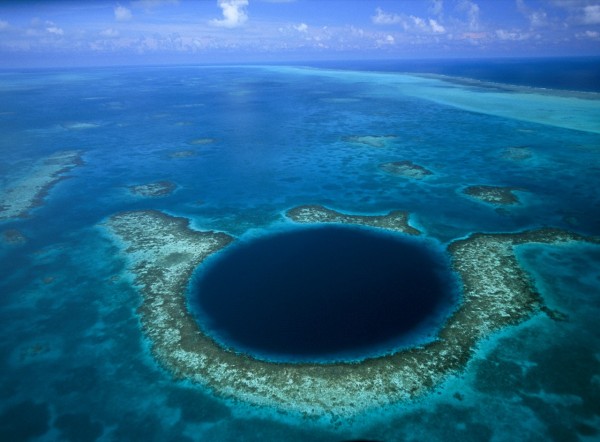
Source
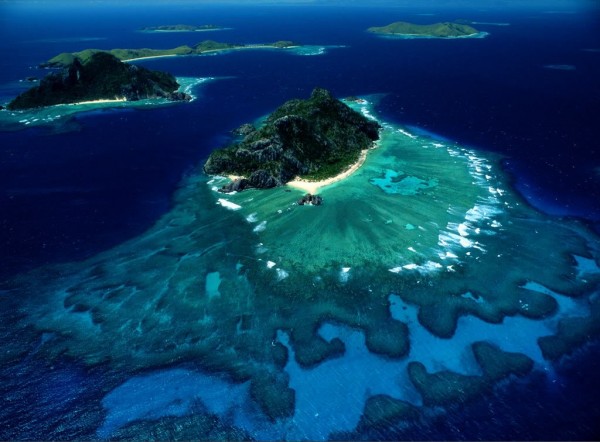
Source
The Great Blue Hole is an underwater sinkhole off the coast of Belize. The hole is 1,000 feet across and 400 feet deep. It was formed as a limestone cave during the last iceage. This is a popular spot amongst recreational scuba divers, who are lured by the opportunity to dive in crystal clear water and meet several species of fish, including giant groupers, nurse sharks and several types of reef sharks such as the Caribbean reef shark and the Blacktip shark.
6. Mirny Diamond Mine – Siberia:
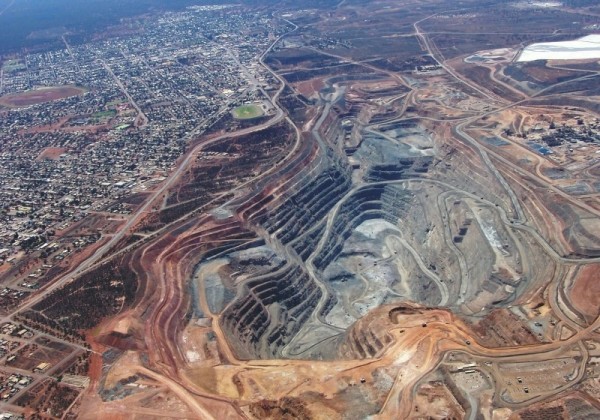
Source
The Mirny Diamond Mine is 525m deep and has a diameter of 1200m. It was the first, and one of the largest, diamond Pipes in the USSR. It is now abandoned. While it was still operational, it would take two hours for trucks to drive from the top to the bottom of the mine. Currently, the mine is operated by Alrosa, the largest diamond producing company in Russia, and employs 3600 workers. It has long been anticipated that the recovery of diamonds by conventional surface methods will saturate. Therefore, in 1970s construction has started of a network of underground tunnels for diamond recovery. Production of diamonds by this method started in 1999 and is estimated to last for another 27 years. This estimate is based on depth explorations down to 1220 meters. In order to stabilize the abandoned main pit, its bottom was covered by a rubble layer 45 meters thick.
7. Diavik Mine – Canada
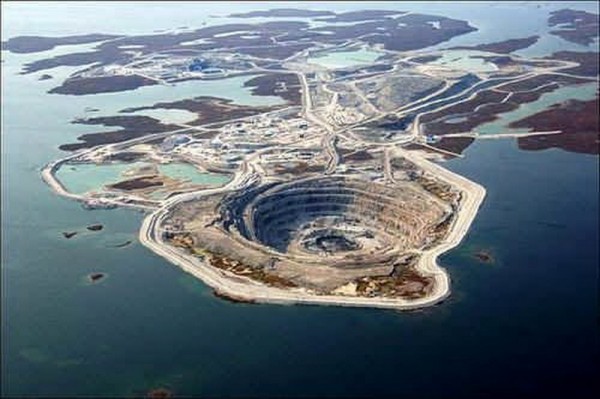
Source
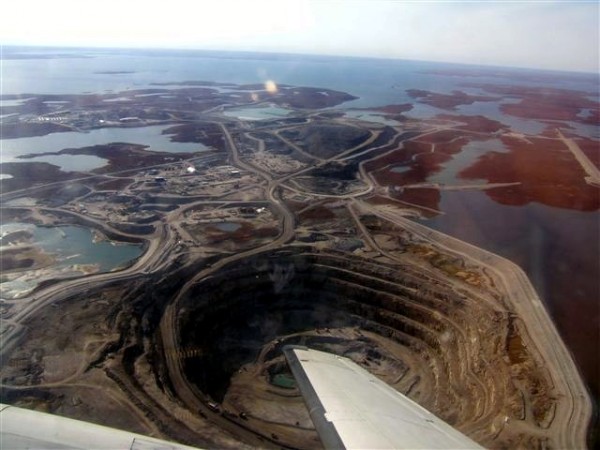
Source
The Diavik Mine is a mine in the Northwest territories of Canada. The mine (opened in 2003) produces 8 million carats or about 1,600 kg (3,500 lb) of diamonds every year. The mine is owned by a joint venture between the Harry Winston Diamond Corporation and Diavik Diamond Mines Inc., a subsidiary of Rio Tinto Group. The lifespan of the mine is expected to be 16 to 22 years. The mine consists of three kimberlite pipes associated with the Lac de Gras kimberlite field and is located on an island 20 square kilometres (8 sq mi) in Lac de Gras and is informally called East Island. It is about 220 kilometres (137 mi) south of the Arctic Circle.
8. Sinkhole – Guatemala:
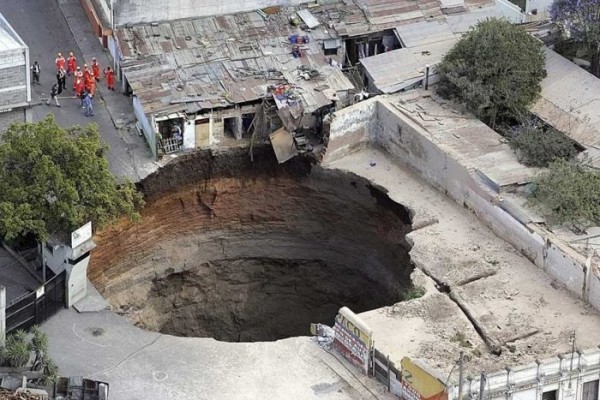
Source
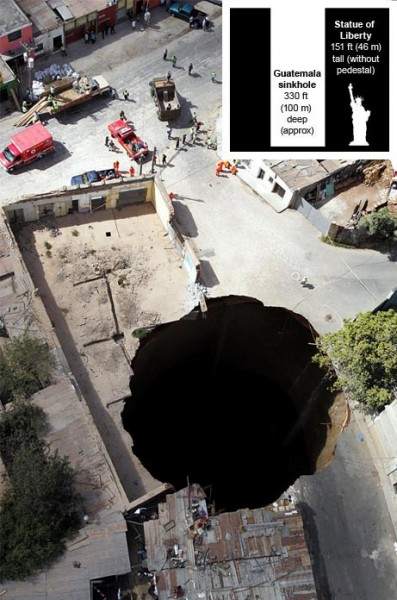
Source
In February 2007 a large sinkhole opened in a poor neighborhood in northeast Guatemala city, killing three people. The sinkhole was 100.5 m (330 ft) deep, and apparently was created by fluid from a sewer dissolving the rock underneath. As a result, one thousand people have been evacuated from the area. The sink hole has since been mitigated and plans to develop on the site have been proposed.
9. Udachnaya Pipe – Russia:
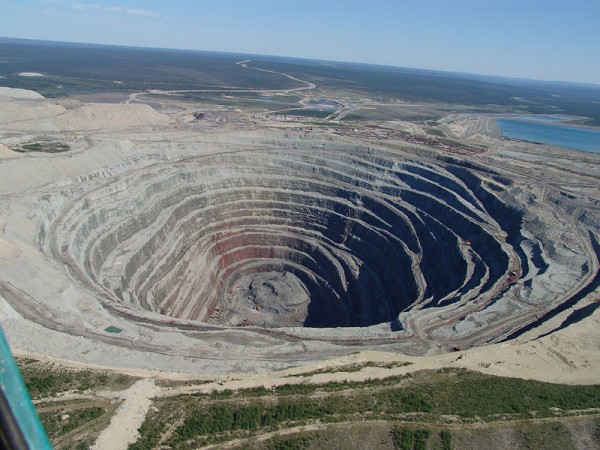
Source
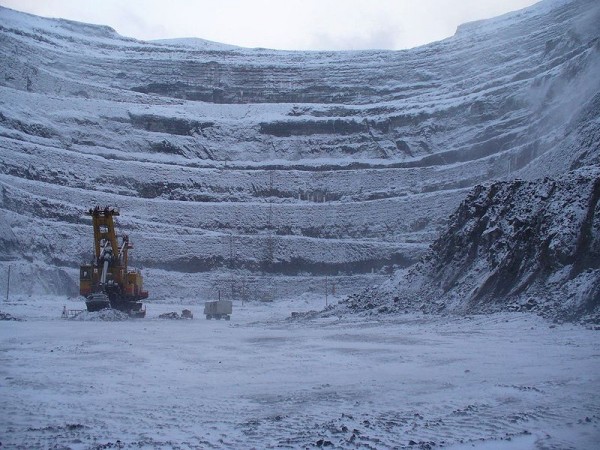
Source
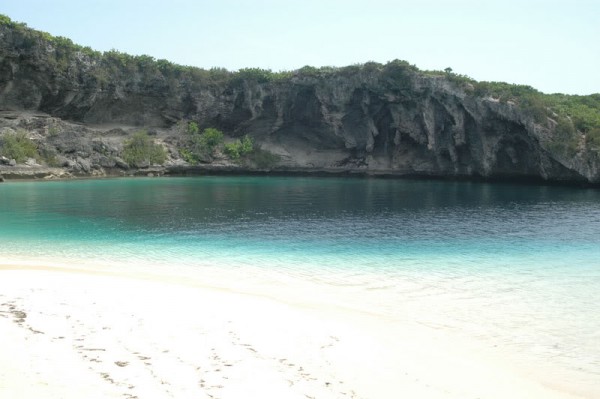
Source
The Udachnaya Pipe is a diamond mine in Russia. The owners of the mine plan to cease its operations in 2010 – in favor of underground mining. The mine was discovered in 1955 and is over 600 meters deep. The nearby settlement of Udachny is named for the deposit. As of 2004, Udachnaya pipe is controlled by Russian diamond company Alrosa, which plans to halt open-pit mining in favor of underground mining in 2010
10. Chuquicamata – Chile
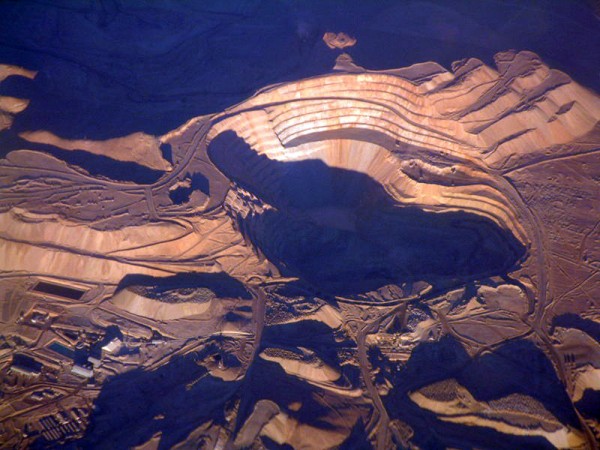
Source
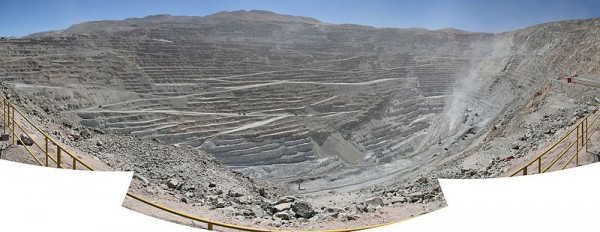
Source
Chuquicamata or “Chuqui” as it is more familiarly known, is an open pit copper mine in Chile. It is the mine with the largest total production of copper in the world – though it is not the largest copper mine. The mine is over 850 meters deep. Copper has been mined for centuries at Chuquicamata as was shown by the discovery in 1898 of “Copper Man”, a mummy dated at about 550 A.D. which was found trapped in an ancient mine shaft by a fall of rock. It is also said that Pedro de Valdivia obtained copper horseshoes from the natives when he passed through in the early 16th Century.
Diavik Mine – Canada
Leave a Reply